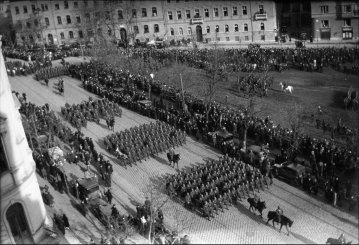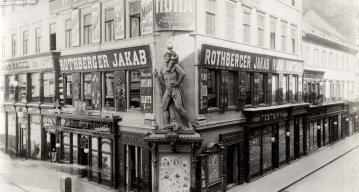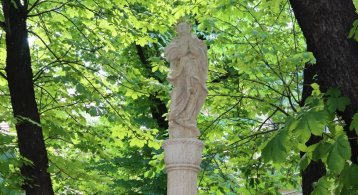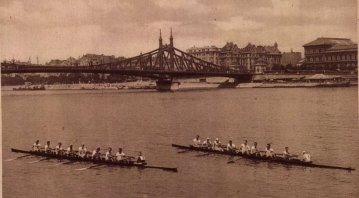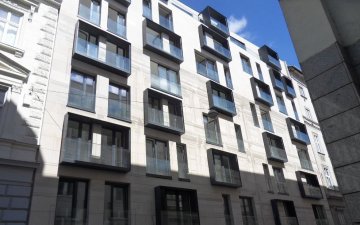Gergely Flier
Cikkek
Trianon also dealt a huge blow to the Hungarian national defense - The law restricting the country's military power came into force in 1922
June 4, 2022 at 12:00 PM
The Trianon peace treaty brought ruthless provisions to Hungary from a military point of view as well: the number of the army was maximized in an extremely small number of 35,000, the number of weapons was determined, and the Hungarian military industry was essentially abolished. With the restrictive provisions, the victorious powers wanted to ensure the military superiority of the surrounding countries, and on the other hand, they wanted to ensure that Hungary did not have the opportunity to question the borders drawn in 1920. The Military Provisions Act came into force in 1922, and we commemorate that a hundred years later.
The Nagy Kristóf House was a real business centre in contemporary Pest
May 26, 2022 at 9:00 AM
The former house at 6 Váci Street is named after the huge statue of St. Christopher of the pharmacy in it, after which the area in front of the building was called Kristóf Square. However, according to the plans of József Hild, the building, which was expanded to two and then three floors, housed several other shops in addition to the pharmacy, including the fashion store of the clothing retailer Jakab Rothberger, which also won the title of imperial and royal court supplier.
The restored Immaculata statue in Krisztinaváros is back to its place - its original was erected 320 years ago
May 6, 2022 at 8:00 PM
Another sculpture with a long history was renewed in the capital: the Immaculata statue in Krisztinaváros, erected 320 years ago in 1702 - the oldest public sculpture in Budapest - has been replaced by a copy since 1928, and in the meantime this work has also needed to be restored. The work was carried out at the Department of Restoration of the Hungarian University of Fine Arts recently, and yesterday the sculpture was placed at the Krisztina Square erection site.
István Széchenyi introduced rowing to the Hungarian capital almost 200 years ago
August 7, 2021 at 10:00 AM
At the Tokyo Olympics, Hungarians once again performed very well in water sports, in keeping with tradition. Rowing became established in Hungary thanks to István Széchenyi, who became acquainted with this sport in England. At the end of the 19th century, competitions were held regularly on the Budapest section of the Danube. Moreover, every year since 1925, university sports clubs have compared their skills on the Danube between Margit Island and the main entrance of the University of Technology, thanks to which countless photographs have survived in which we can see the old pre-war city behind the rowers.
New residential building completed on Erkel Street 5 years after the demolition of the classicist building
August 3, 2021 at 12:00 PM
Although during urban development it is often the case that some of the old buildings are demolished and replaced by new ones, it is very painful to lose a value that is unique or rare and to replace it with a building which has not got the same values, in addition, the more or less uniform street view is sacrificed as well. The new residential building was completed five years after the demolition of the classicist residential building at 18 Erkel Street in the 9th district. Pestbuda now shows the readers what it turned out to be.
The sanctuary of the St. Anne's Church in Batthyány Square was built 275 years ago
July 24, 2021 at 9:00 AM
One of the most characteristic buildings on the banks of the Danube in Buda is the St. Anne's Church in Watertown (Víziváros). The building on Batthyány Square in the 1st District also stands out among the Baroque architectural monuments of the capital. The history of the church dates back to the 18th century, its foundation stone was laid in 1740 and then it was built for a long time. Its sanctuary was built 275 years ago, in 1746, and it was used as a church until the building was completed. On the anniversary, Pestbuda visited the patinated church building of Buda.

